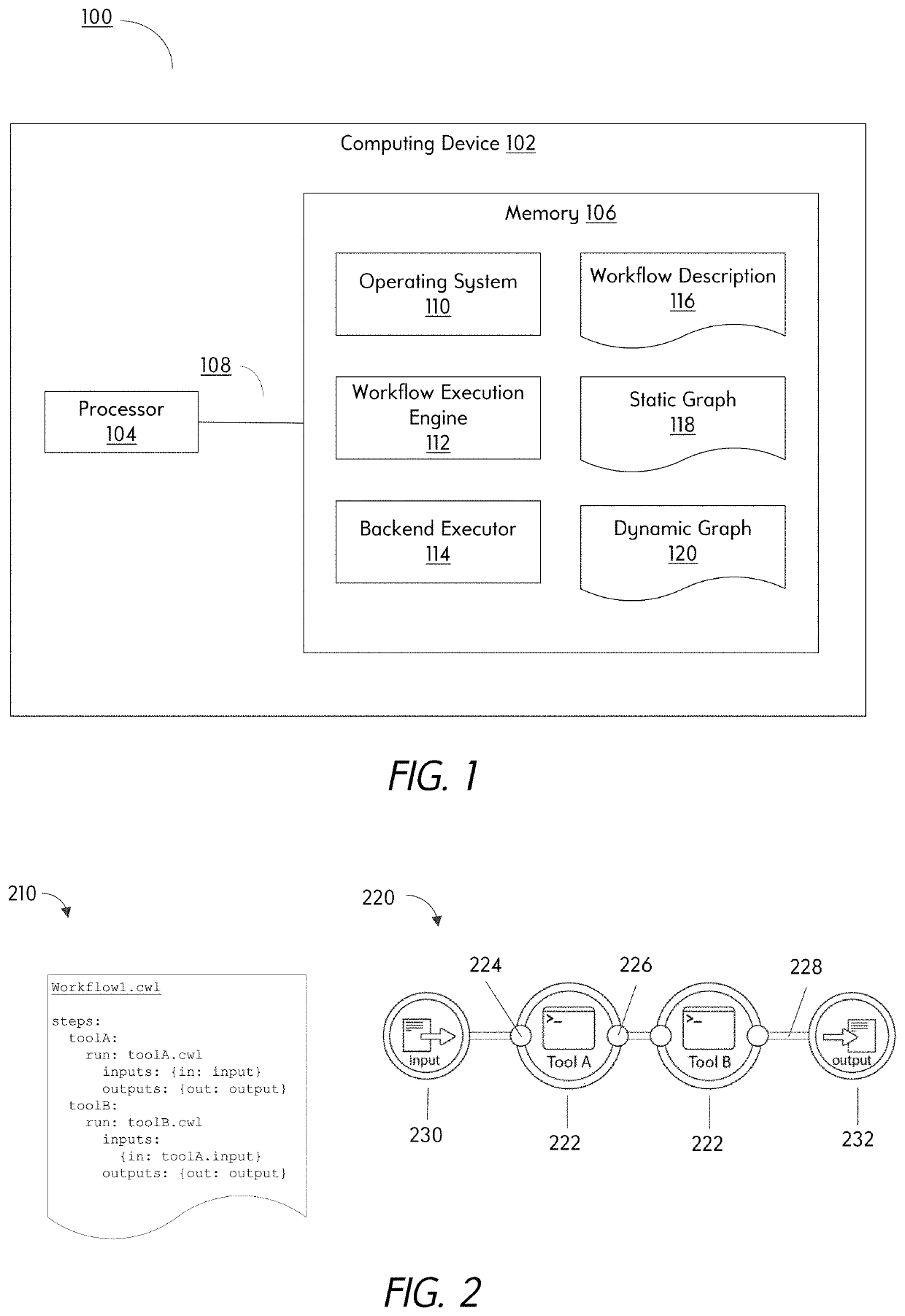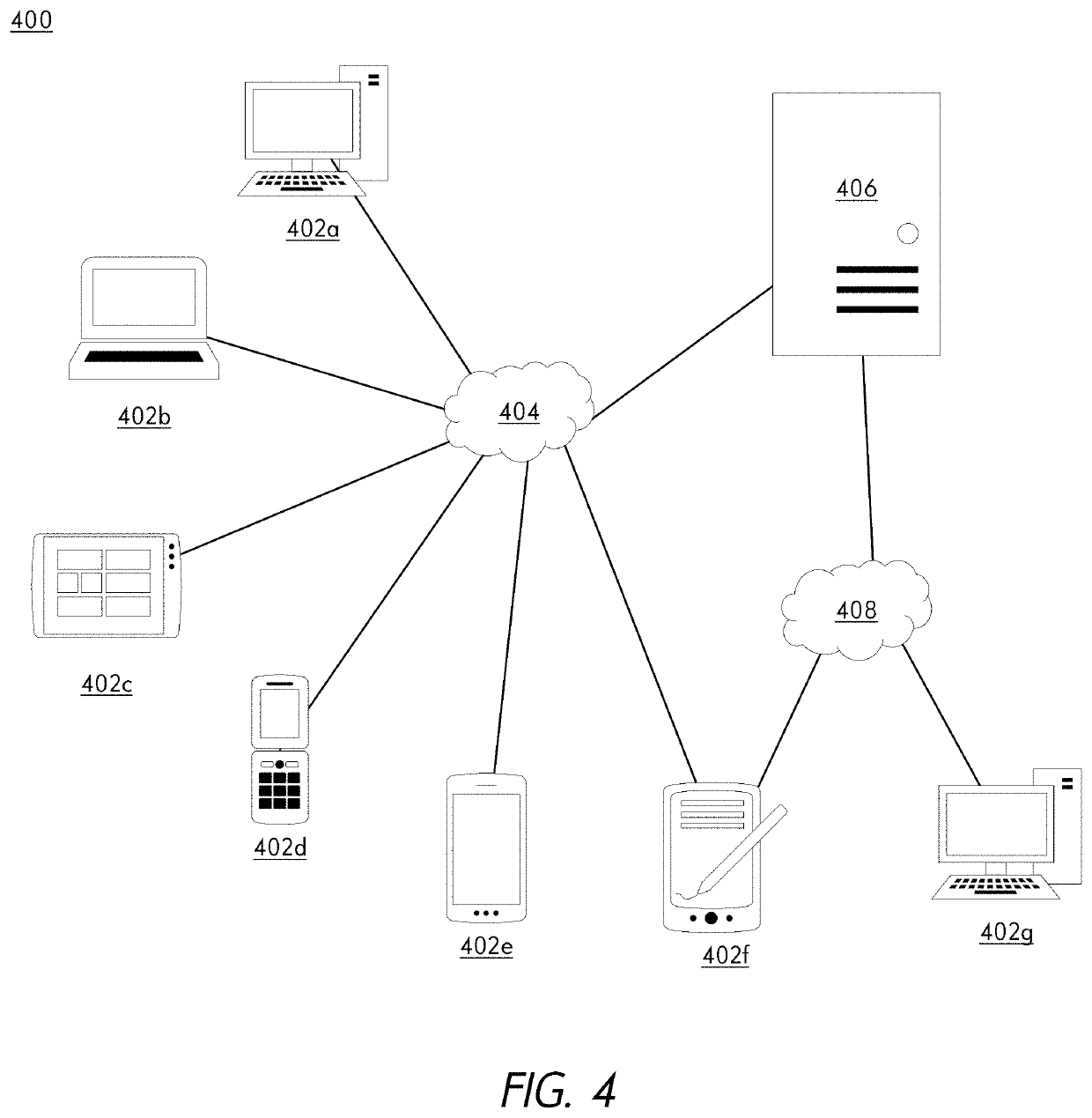Systems and methods for processing computational workflows
a computational workflow and workflow technology, applied in computing, instruments, drawing from basic elements, etc., can solve the problems of limited scalability, reproducibility, efficiency, and limitations of current state-of-the-art workflow platforms, and achieve the effects of limiting scalability, reproducibility, efficiency, and wide array of analysis methods and complexity
- Summary
- Abstract
- Description
- Claims
- Application Information
AI Technical Summary
Benefits of technology
Problems solved by technology
Method used
Image
Examples
Embodiment Construction
[0028]Workflow descriptions and the engines that interpret and execute them must be able to support a plethora of computational environments and ensure reproducibility and efficiency while operating across them. In recent years, the concept of organizing data analysis via computational workflows and accompanying workflow description languages has surged in popularity as a way to support the reproducible analysis of massive genomics datasets. However, the inventors have recognized and appreciated that large and complicated computational workflows are often specific for single architectures, preventing their reproducibility on other platforms. Further, a complex ecosystem of workflow languages has developed, preventing interoperability. Moreover, as the complexity of computational workflows increases, it becomes more challenging to optimally compute.
[0029]Robust and reliable workflow systems share three key properties: flexibility, portability, and reproducibility. Flexibility can ref...
PUM
 Login to View More
Login to View More Abstract
Description
Claims
Application Information
 Login to View More
Login to View More - R&D
- Intellectual Property
- Life Sciences
- Materials
- Tech Scout
- Unparalleled Data Quality
- Higher Quality Content
- 60% Fewer Hallucinations
Browse by: Latest US Patents, China's latest patents, Technical Efficacy Thesaurus, Application Domain, Technology Topic, Popular Technical Reports.
© 2025 PatSnap. All rights reserved.Legal|Privacy policy|Modern Slavery Act Transparency Statement|Sitemap|About US| Contact US: help@patsnap.com



